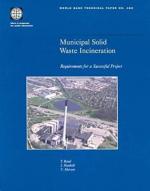|
This section contains 730 words (approx. 3 pages at 300 words per page) |

|
Waste to energy (WTE) is the term used to describe the conversion of waste by-products into useful steam or steam-generated electricity. Typically, WTE is produced by converting municipal solid waste (MSW), which is defined as residential and commercial refuse, and makes up the largest source of waste in industrialized countries. This industry has been producing heat and power in the United States for a century, and there are currently more than one hundred WTE plants nationwide. Recently, however, the definition of waste has been expanded from MSW to include wastes such as wood, wood waste, peat, wood sludge, agricultural waste, straw, tires, landfill gases, fish oils, paper industry liquors, railroad ties, and utility poles. In 1999 these by-products produced approximately 3.2 quadrillion BTUs (i.e., 1 × 1015 British thermal units, which is also known as a quad) of energy out of approximately 97.0 quads of energy consumed in the...
|
This section contains 730 words (approx. 3 pages at 300 words per page) |

|


